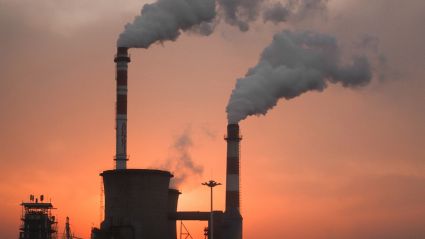
2024 has been a year of extremes: the hottest year in recorded history, record-breaking ocean temperatures, and soaring atmospheric CO2 levels, according to the Copernicus Climate Change Service. 2023 also saw an increasing frequency of fires, droughts, endless heat waves, and global average temperatures 1.8°C above pre-industrial levels. Dataverse reports that glaciers around the world are melting at an unprecedented rate, with preliminary data from the global set of reference glaciers indicating the largest loss of ice on record. Based on a report by the World Meteorological Organization, the cascading effects of these changes are far-reaching, threatening food security, displacing populations, and intensifying the vulnerabilities of communities worldwide. And yet, despite these dire signals, greenhouse gas emissions have continued to rise, increasing by 2.1 percent in 2023, and the world’s consumption of crude oil and coal has reached historic highs.
It might seem redundant to underscore the severity of the climate crisis repeatedly. But adapting to climate change is not just a necessity—it is an urgent call to action. To create economies and societies capable of withstanding the impacts of climate change, we must not only increase financial flows toward adaptation but also redirect massive investments from activities that exacerbate climate risks to those that enhance resilience. At COP28, the commitment to a new collective quantified goal post-2025 was established, starting from a floor of US$100 billion per year, with a focus on addressing the needs and priorities of developing countries. Beyond financial flows, developing a climate-resilient health system is equally crucial.
As the impacts of climate change become more pronounced, there is an opportunity to pivot from vulnerability to resilience through climate-integrated urban planning. Such planning is essential for creating a future where people, vital services, and infrastructure can withstand climate risks. Urban development plays a critical role in determining how climate hazards, like floods or the urban heat island effect, impact a city. As cities grow, particularly into wetlands and flood-prone areas, the risks associated with climate change intensify.
Adapting to climate change is not just a necessity; it is an urgent call to action.
Of the 8.2 billion humans who live in the world, World Bank Group reports that nearly 56 percent live in cities, and this number is poised to more than double by 2050, at which point nearly 7 of 10 people will live in cities. Most of the human population, nearly 6.4 billion people, will need urban civic amenities that include clean water, safe housing, access to health care, public transportation, and ways of appropriate waste disposal, to say the least. Already, cities are facing the damaging impacts of climate change—extreme weather volatility, exacerbated urban heat islands, heat waves, floods, droughts, increase in vector-borne diseases like malaria and dengue fever—all disrupting businesses, transportation, food networks, and health and education facilities.
Can our cities face the brunt of an urban future in the midst of a climate crisis?
The answer lies in creating resilient cities—urban areas that can better manage risks, enhance collaboration, maximize resource efficiency, and improve the stability of their systems, businesses, communities, and individuals. Investing in urban resilience and climate adaptation is not just an environmental necessity; it also makes clear economic sense. Unmitigated disasters and the impacts of climate extremes are costly for cities, and while adaptation requires significant investment, it is far less expensive than the costs associated with disaster relief and recovery. Adaptation efforts protect lives and reduce disruption and damage.
Moreover, many adaptation investments offer multiple benefits to cities and their residents. For instance, reinforced river embankments can serve as pedestrian paths, bike lanes, or parks, while nature-based strategies improve air quality, conserve the environment, and enhance citizens' well-being.
Many cities, including members of C40 Cities, are already leading the charge in climate action, demonstrating ambition and implementation on a global scale. Building climate-resilient cities requires a fundamental shift in how urban areas address the climate crisis and integrate climate considerations into everyday governance. Access to data and tools is crucial for local climate action, enabling city leaders to make informed decisions across sectors and with various stakeholders. Simplifying these tools and ensuring that high-quality data are accessible, especially for cities with limited capacity, is essential to support their climate adaptation efforts.
In a world where unpredictability is the new normal, urban resilience is no longer optional; it is essential. Cities that prioritize resilience will not only survive but also thrive, creating sustainable environments where communities can flourish. Through integrated planning, community engagement, and strategic investments, cities can build the infrastructure and social cohesion necessary to withstand the challenges ahead. By making resilience a priority, cities can lead the way in shaping a sustainable, thriving world.















